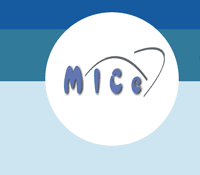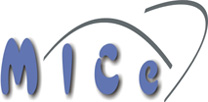 |
||||||||
 |
||||||||
|
|
||||||||
 |
 |
|||||||
THE TORONTO CENTRE FOR PHENOGENOMICS
MOUSE IMAGING CENTRE |
 |
|
|
MICe TechnologiesMagnetic Resonance Imaging (MRI)Magnetic Resonance Imaging (MRI) is a radiological tool used in the diagnosis of internal diseases of soft tissues, such as the brain and heart. In addition to excellent soft tissue contrast, the energy used in MRI is not harmful. This makes MRI ideally suited for repeated studies in the same subject over time. The same MR principles can be applied for mice but much larger fields are needed to attain the necessary higher resolutions because the mouse is so much smaller. We use a field of 7 Tesla compared to clinical scanners at 1.5 or 3 Tesla. Ultrasound Biomicroscopy (UBM)Ultrasound Biomicroscopy (UBM) is a new technology for noninvasive imaging of small animals and superficial structures in humans, with very high spatial resolution. Just as the conventional clinical ultrasound imaging system is used to diagnose and treat patients in clinical practice, the UBM, with ~10 times higher imaging frequency and resolution than those of clinical system, is used to evaluate the structural and physiological abnormalities of various organ systems in mice which are genetically altered to model human diseases. Microcomputed Tomography (micro-CT)High-resolution X-ray computed tomography (micro-CT) produces detailed 3D images of soft tissue and bone structure. In the case of soft tissue, the highest resolutions are achieved with the help of contrast agents, which increases the X-ray attenuation but precludes scanning of live specimens. Since the images created are inherently 3D, this technology provides a powerful means of examining biological samples with complex structure and facilitates comparison of specimens to identify anatomical differences due to disease or genetic manipulations. Optical Projection Tomography (OPT)Optical Projection Tomography (OPT) is an optical imaging tool that creates high resolution 3D images of samples that are over ten times larger than samples imaged with other optical microscopic techniques. OPT images also have excellent contrast between a fluorescent region of interest and the rest of the specimen. We are researching alternative data processing methods in order to obtain higher resolution images of large specimens. We use OPT to study embryos and even complete organs from adult mice.
|
|
© 2004 The Centre for Phenogenomics |
|